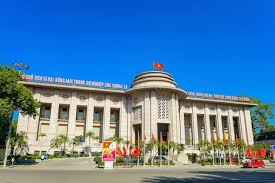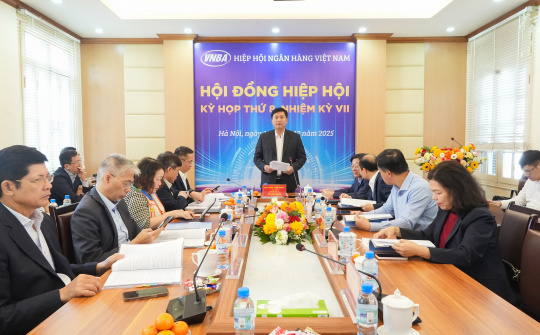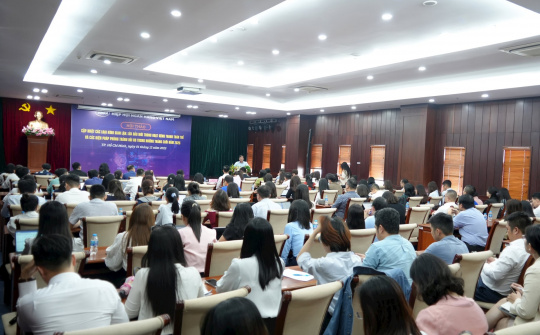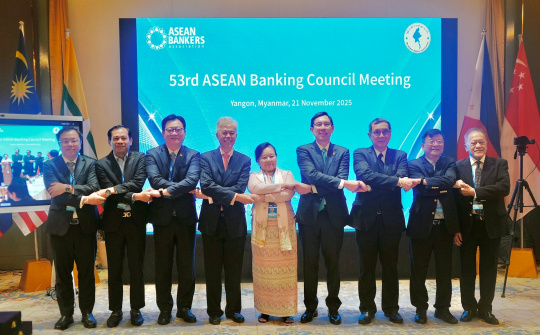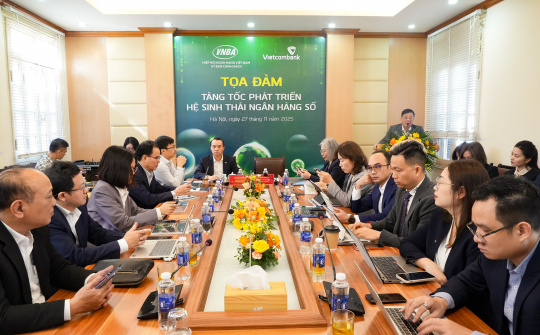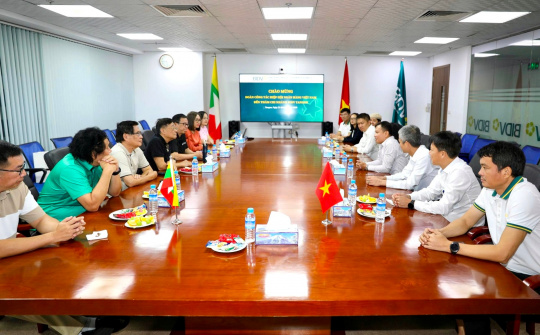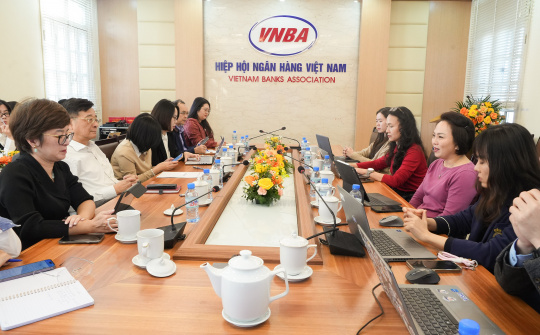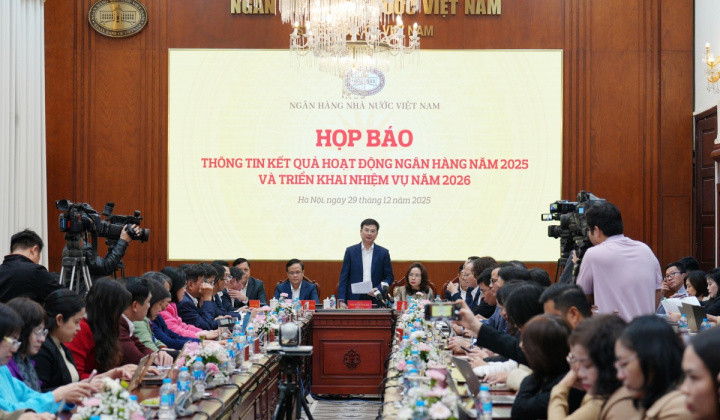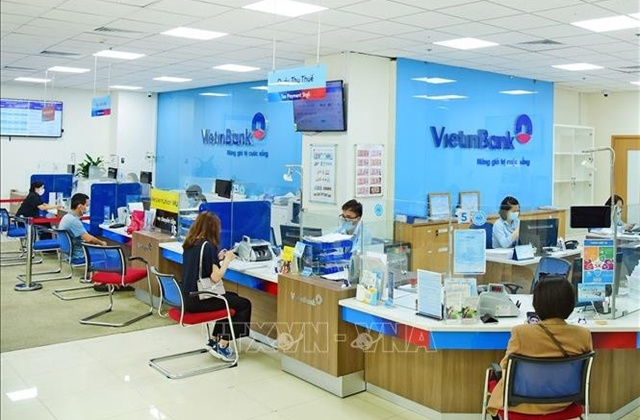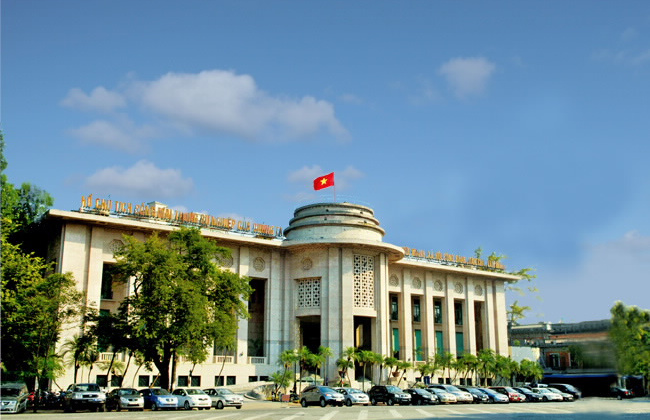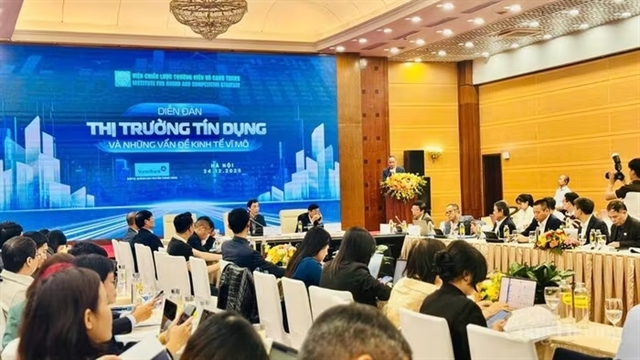Attending the meeting, on behalf of the State Bank of Vietnam (SBV), there were: Mr. Pham Anh Tuan, Director of the Payment Department.
On behalf of the Vietnam Banking Association, there were: Dr. Nguyen Quoc Hung, Vice Chairman and General Secretary; representatives of member credit institutions attended in person and online.

Dr. Nguyen Quoc Hung - Vice Chairman and Secretary General of VNBA
Speaking at the meeting, Mr. Pham Anh Tuan - Director of the Payment Department clarified information related to the new payment subject.
According to Mr. Tuan, the Government has issued Decree No. 52/2024/ND-CP regulating non-cash payments, effective from July 1, 2024, and the State Bank has issued Circular 40/2024/TT-NHNN, effective from July 17, 2024, on the provision of intermediary payment services, which has greatly affected the units providing intermediary payment services.
In which, e-wallets are regulated on par with bank accounts and also on par with bank cards. This is a huge new step in the legal corridor to put e-wallets on par with accounts and cards.
Previously, in Circular 39, e-wallets were not considered a means of payment but the wallet's operations were only considered to stop within the organization, such as through a linked account between the wallet and the cardholder's account opened at a bank cooperating with the Wallet. Therefore, there is only the concept of "Topup" which is withdrawal, deposit and rotation in the Wallet's operations. At the same time, payment acceptance units are managed by intermediary organizations.
However, when an e-wallet becomes a means of payment, it will have the same payment rights as a bank account. At that time, the e-wallet can make payments from wallet to wallet and from wallet to bank account. Thus, the source of money into the wallet is no longer only from linked accounts but from all different sources, possibly from accounts at other banks or from money sources from other wallets, etc. These are services for transferring money from accounts to wallets and vice versa from wallets to accounts.
For internal money transfers within banks, there will be no fees. For money transfers between banks, NAPAS charges a fee, but some commercial banks still apply it for free to customers. When an e-wallet becomes a means of payment, it will have to be equal to money transfers to bank accounts.
According to Mr. Tuan, raising the issue of equality will contribute to promoting interconnected payment activities between units accepting payment with each other. From there, it creates a push for interconnectivity in payment. In particular, there needs to be a clear distinction between units accepting payment by QR code for money transfer and accepting payment by QR code for payment. Because "money transfer" and "payment" are two different concepts, because "money transfer" can be done continuously and many times but "payment" only transfers money once.
In addition, according to Mr. Pham Anh Tuan, Vietnam has completed connecting the cross-border payment system via QR Code with Thailand, Cambodia (continuing to deploy with Laos), allowing people of each country to scan QR Code to pay for goods and services safely and conveniently in these countries right on the mobile application of Vietnamese banks and vice versa.

View of the meeting
However, it is currently only implemented well in the outbound direction, meaning that Vietnamese customers when going to Thailand or Cambodia to buy goods can easily scan the QR Code to pay, but in the opposite direction, tourists from Thailand or Cambodia can hardly pay in Vietnam,...
According to the representative of the Payment Department, some of the main reasons leading to the above problem are: The level of brand recognition at the bilateral payment acceptance points of banks and the payment acceptance network in Vietnam is not yet synchronized, easily causing confusion between domestic payment QR codes and bilateral payment QR codes: Banks when participating in the service all prioritize implementing the Vietnam direction to make payments at payment acceptance units abroad...
Mr. Pham Anh Tuan said that bilateral payment cooperation via QR codes between countries in the region is in line with the association trend in ASEAN, bringing convenience of payment in local currency to Vietnamese customers when going to cooperating countries, as well as tourists from these countries when coming to Vietnam.
Therefore, Mr. Pham Anh Tuan suggested that NAPAS (as the focal point for connection) and member banks participating in the connection project need to have solutions to ensure the acceptance of bilateral payments via QR codes in Vietnam, including: ensuring the acceptance of bilateral payments via QR codes at payment acceptance units of member banks; having measures to expand the network of units accepting bilateral payments via QR codes.
Speaking at the meeting, Mr. Nguyen Dang Hung, Deputy General Director of NAPAS, pointed out the difficulties and problems arising during the testing process of the QR code payment connection project with Thailand and Cambodia, and analyzed the causes, in order to discuss and find appropriate solutions between the parties involved in promoting bilateral payments.
Speaking at the meeting, representatives of member banks said that there are currently 2 forms of international payment acceptance: payment via VietQR code (free payment), payment via QR code (0.5% fee for the payment acceptance unit). Therefore, there needs to be a unified format so that member banks can easily implement it.
In addition, when the bank signs a contract with a payment acceptance unit, the regulations and signing process must comply with the law, have identification and must be signed "offline". In addition, there needs to be a consensus on collecting fees or transferring money via free QR codes or paying fees.
In addition, representatives of banks and payment intermediaries have contributed ideas and recommendations to remove obstacles, improve operational progress, promote bilateral payments via QR codes with a positive spirit of response, seeking unified solutions, and providing a clear implementation roadmap.
In particular, the implementation in Laos, Cambodia and Thailand has a small number of customers while Korea and China have a large number of potential customers, so it is necessary to focus on markets with great potential first. In particular, in 2024, there are many new circulars and laws that banks must respond to in a timely manner. Therefore, the bank's resources must be spread thin to respond, while when combined with NAPAS to deploy the dynamic QR standard, it has not met the requirements,...
Concluding the meeting, Dr. Nguyen Quoc Hung said that the meeting was an opportunity for the parties involved to frankly exchange and share, and raised many issues that needed to be discussed. From there, effective solutions were proposed and recommendations were made to competent authorities to support and create conditions to promote bilateral cross-border payments.
Regarding inter-payment via QR codes with countries in the region, first of all Thailand, Laos, Cambodia, then China, Korea, and Japan, Dr. Nguyen Quoc Hung said that this is an important and urgent task. At the same time, it is recommended that a research team be established to connect payments via QR codes, with NAPAS as the focal point, to research and propose unified, consensual, and clear working regulations for banks that agree to participate in the bilateral payment connection project.
Dr. Nguyen Quoc Hung also requested the Payment Department as well as the State Bank to consult on issues related to the legal corridor, share and support to remove obstacles for banks and payment intermediaries during the implementation process.
Dr. Nguyen Quoc Hung hopes that by the end of October 2024 at the latest, banks will have a consensus in promoting cross-border interconnected payments.
T.D


